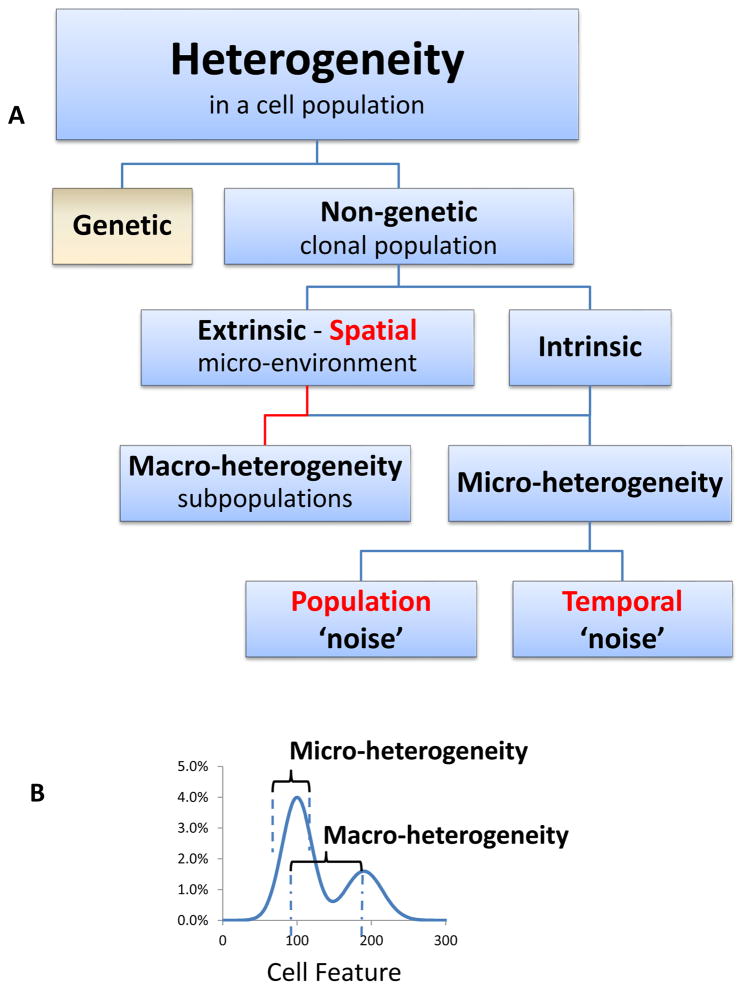Figure 2.
Classification of the types of heterogeneity that can be exhibited by a population of cells (adapted from Huang 1). A. Heterogeneity can be the result of genetic variations, and/or non-genetic factors even in a clonal population. Non-genetic heterogeneity, also called phenotypic heterogeneity, can be driven by extrinsic factors, such as the microenvironment in a tissue that can influence for example, the protein expression levels in surrounding cells. Extrinsic factors drive Spatial heterogeneity often exhibited as macro-heterogeneity. Intrinsic heterogeneity can be detected even in a uniform environment and has been classified as macro-or micro-heterogeneity depending on the characteristics of the distribution. B. Macro-heterogeneity refers to variations in one or more cellular traits that results in discrete phenotypes or sub-populations of cells, and can be driven by both extrinsic and intrinsic factors. Micro-heterogeneity refers to random variations within a single phenotype that can include population ‘noise’ resulting from variations in regulatory networks, for example, or temporal ‘noise’ such as variation in protein synthesis over time. Highlighted in red are three important measurable components of the distribution of a cell feature.

